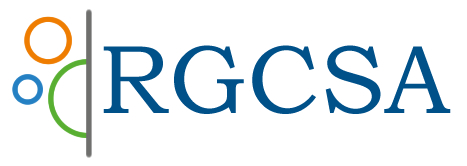Point by point discussion of various terms in astrology. What do they mean in terms of “scientific astrology”? Clarity of definition may help in developing better research strategies.
Blog Archives
Astrology in the Index Medicus
Since 1963, sections on astrology and astronomy have appeared regularly in the Index Medicus, a catalogue of periodical literature compiled annually by the American Medical Associaton (until 1964) and the U.S. Department of Health, Education and Welfare. A list is presented of all titles under “Astrology” from 1963 to May 1969. Titles under “Astronomy” have also been included, except for articles on telescope optics and similar matters not related to astrology.
Autistic study: a query
Data of 7 charts is presented and thoughts on the phenomenon that the Moon/Saturn midpoint appears in 6, are invited.
Cerebral Palsy: summary of some preliminary findings of a pilot study
The findings presented are taken from an intensive study of 10 cases of severe cerebral palsy (study in progress at time of publication). The summary emphasises the extreme importance of considering mid-points together with degree areas.
Human Births
This is a report of a paper published in The American Journal of Obstetrics and Gynaecology (1967 Vol. 98 p 1002) on an analysis by Dr. Walter Menaker of patterns of births in New York City between January 3rd 1961 and the end of 1963(n = approx 250,000 births). 1.01% more births occured during the half cycle centred on the Full Moon.
The 9.22 Year Cycle in grasshopper abundance
The grasshopper cycle is discussed along with other 9 yr cycle phenomena, e.g. business failures and stock prices, number of years between especially thick tree rings in California, and thick deposits of mud laid down in lake bottoms in the Pleistocene and pre=Pleistocene epochs. The article emphasises the importance of understanding the diverse areas that are subject to cyclical patterns.
Cerebral Palsy: Summary of some preliminary findings of a pilot study
The findings presented are taken from an intensive study of 10 cases of severe cerebral palsy that is, at prsent, in progress. These findings are published at this stage in order to further direct researchers attention to the extreme importance of considering midpoints together with degree areas.
Can triplicity predict accidental death? A pilot study
The four triplicities or elements—Fire, Earth, Air, and Water—are said to influence or determine the typology and character of the native. This influence may have the quality of a bidirectional affinity, where (i) the element (determined from the sign of the native) may influence the native at birth and is therefore related to the native’s typology, and (ii) the native in turn may be drawn, or show an affinity towards his/her element environmentally (i.e., towards concrete forms) or psychologically (i.e., towards abstract forms). There is evidence supporting case (i), but for case (ii), the depth or extent of that affinity needs to be determined. In the present pilot study, it was hypothesised that if a native is to suffer an accidental death, then the native’s element indicates the nature of that death. Online databases of accidental deaths of prominent individuals were analysed to determine proportions of signs and elements. There was statistical evidence that the Water-related signs have a greater affinity for water-related deaths (i.e., drowning), but no specific evidence was found for the other elements. It is argued that Water signs are not accident prone, nor are they necessarily predisposed psychologically to water-related fates more often than the other signs, but merely suffer from over-representation in the relevant population (i.e., drowning victims) due to their astrological affinity for water.
The Solar Region (an ouitline of opinion)
This article seeks to present an outline of opinion on the region in which the Sun’s magnetic field is the dokminant influence. References are presented with summaries of content by the author.
Empirical study of some astrological factors in relation to dog behaviour differences by statistical analysis and compared with humans
A survey comprising 500 pedigree dogs was realised in the Paris region. For each dog six behavioural traits were determined and ten of their astrological traits were retained. A statistical interpretation of the possible relationships between the two sets of traits was performed with permutation tests. Two strong associations were detected between the angular positions of Jupiter and the Sun, and the extraversion dominant trait. Other associations were also suggested. Remarkably, these associations are similar to standard indications proposed by astrology for humans.
